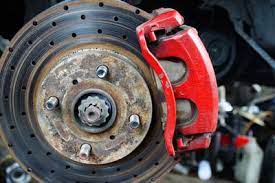The effectiveness of a vehicle’s braking system is critical braking system parts to ensuring safety on the road. Understanding the various components that make up this system is essential for both drivers and automotive enthusiasts alike. In this article, we’ll delve into the specifics of braking system parts, shedding light on their functions and importance in maintaining optimal braking performance.
- Brake Pads: Brake pads are among the most crucial components of a vehicle’s braking system. They are responsible for creating the friction necessary to slow down or stop the vehicle when pressure is applied to the brake pedal. Typically made of composite materials like ceramic, organic, or metallic compounds, brake pads undergo significant wear and tear over time and need periodic replacement to maintain peak performance.
- Brake Rotors (Discs): Brake rotors, also known as discs, work in conjunction with brake pads to facilitate the braking process. When the brake pedal is engaged, the brake pads clamp down on the rotors, generating friction that converts kinetic energy into heat, ultimately slowing down the vehicle. High-quality rotors are essential for efficient heat dissipation and consistent braking performance, particularly during heavy braking or driving in demanding conditions.
- Brake Calipers: Brake calipers play a vital role in the operation of disc brakes. These hydraulic or mechanical devices house the brake pads and facilitate their movement when pressure is applied to the brake pedal. Calipers contain pistons that press the brake pads against the rotors, initiating the braking action. Properly functioning calipers are crucial for ensuring even braking pressure and minimizing brake fade.
- Brake Lines and Hoses: Brake lines and hoses form the hydraulic connection between the brake pedal and the brake calipers or wheel cylinders. They transmit the brake fluid pressure generated by the pedal to the braking components, initiating the braking process. It’s essential to regularly inspect brake lines and hoses for signs of wear, corrosion, or leaks, as any compromise in their integrity can lead to brake failure and compromised safety.
- Brake Master Cylinder: The brake master cylinder serves as the primary hydraulic pump in a vehicle’s braking system. When the brake pedal is depressed, it creates hydraulic pressure within the master cylinder, which is then transmitted through the brake lines to the calipers or wheel cylinders, initiating the braking action. A malfunctioning master cylinder can result in spongy or unresponsive brakes, highlighting the importance of regular maintenance and inspection.
Conclusion: Understanding the various components of a vehicle’s braking system is essential for ensuring optimal performance and safety on the road. From brake pads and rotors to calipers and master cylinders, each part plays a crucial role in facilitating the braking process. By staying informed about these components and conducting regular maintenance, drivers can enjoy reliable braking performance and peace of mind during their travels.

